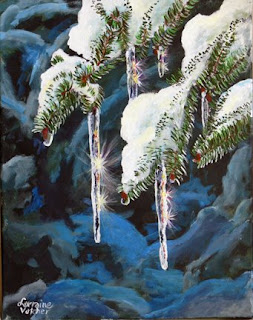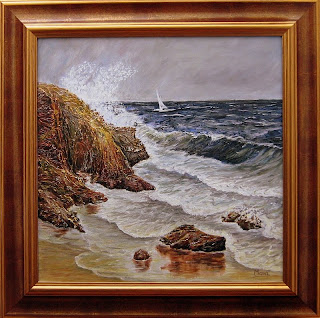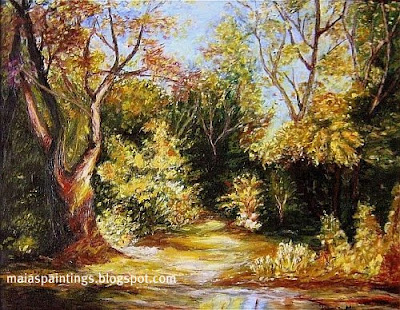The rules for combining pigment colors are different from those for combining light colors.
White light can be produced by combining all colors of the spectrum at once, as Newton discovered. However, it is also possible to make white light by combining only three colors in the spectrum: red, green, and blue. For this reason, these three colors of light are known as the primary colors when we speak about light or printing.
A pigment is a substance that reflects only certain wavelengths of light.
In "painter color"mixing, combining all three of the primary colors of paints, yellow, blue, and red, produces black paint.
Color Properties.
Hue:
The actual color of something, such as red, green, or blue, or the name we give a color.
Each primary, secondary and tertiary hue is at a level of full saturation, or brightness. Which means there is no black, white, or gray added.
Value:
Value or tone in painting context is a measure of how light or dark a color is,without any consideration for its hue (color). By adding a relative amount of white or black in a hue can be achieved a variety of tones.
Value or tone is that how light or dark it seems is also influenced by what’s going on around it. What appears light in one circumstance, can appear darker in another circumstance, for instance when it’s surrounded by even lighter tones.
Shade:
The hue (color) produced by mixing a color with black or gray results in darker values of the hue known as shades. For example, burgundy is a shade of red.
Tint:
A tint is any hue (color) that has been mixed with white resulting lighter values of the hue. Pink is a tint of red.
Chroma:
The chroma or saturation of a color is a measure of how intense it is. Think of it as “pure, bright color”, compared to a color diluted with white, darkened by black or gray, or thinned by being a glaze. Variations in chroma can be achieved by adding different amounts of a neutral gray of the same value as the color we're wanting to alter.
It is difficult to distinguish between Shades (in terms of hue). Tints are easy to distinguish between.
The difference between chroma and value is that with chroma you’re considering how pure or intense the hue is, whereas with value you’re not considering what the hue is at all, just how light or dark it is.
Privious: Lesson 3 -The color wheel
Read more >>
White light can be produced by combining all colors of the spectrum at once, as Newton discovered. However, it is also possible to make white light by combining only three colors in the spectrum: red, green, and blue. For this reason, these three colors of light are known as the primary colors when we speak about light or printing.
A pigment is a substance that reflects only certain wavelengths of light.
In "painter color"mixing, combining all three of the primary colors of paints, yellow, blue, and red, produces black paint.
Color Properties.
Hue:
The actual color of something, such as red, green, or blue, or the name we give a color.
Each primary, secondary and tertiary hue is at a level of full saturation, or brightness. Which means there is no black, white, or gray added.
Value:
Value or tone in painting context is a measure of how light or dark a color is,without any consideration for its hue (color). By adding a relative amount of white or black in a hue can be achieved a variety of tones.
Value or tone is that how light or dark it seems is also influenced by what’s going on around it. What appears light in one circumstance, can appear darker in another circumstance, for instance when it’s surrounded by even lighter tones.
Shade:
The hue (color) produced by mixing a color with black or gray results in darker values of the hue known as shades. For example, burgundy is a shade of red.
Tint:
A tint is any hue (color) that has been mixed with white resulting lighter values of the hue. Pink is a tint of red.
Chroma:
The chroma or saturation of a color is a measure of how intense it is. Think of it as “pure, bright color”, compared to a color diluted with white, darkened by black or gray, or thinned by being a glaze. Variations in chroma can be achieved by adding different amounts of a neutral gray of the same value as the color we're wanting to alter.
It is difficult to distinguish between Shades (in terms of hue). Tints are easy to distinguish between.
The difference between chroma and value is that with chroma you’re considering how pure or intense the hue is, whereas with value you’re not considering what the hue is at all, just how light or dark it is.
Privious: Lesson 3 -The color wheel




























